Review: The White Horse of Lowvale

Cover by Tania Herrero
Introduction
I want to talk about a module I recently got in the mail. Tania Herrero's The White Horse of Lowvale, described as a "System Neutral Folk Horror Scenario". Folk Horror is something that typically goes well with Cairn, so when this project popped up on Kickstarter it was an instant-back for me, especially since my friend Nova of Playful Void/Idle Cartulary fame gave her previous work Crown of Salt a rather glowing review.
So let's talk about it.
I am obviously going to spoil this module for any potential players, or GMs who get a kick out of reading modules for the story, I guess. You have been warned.
Premise/Setting
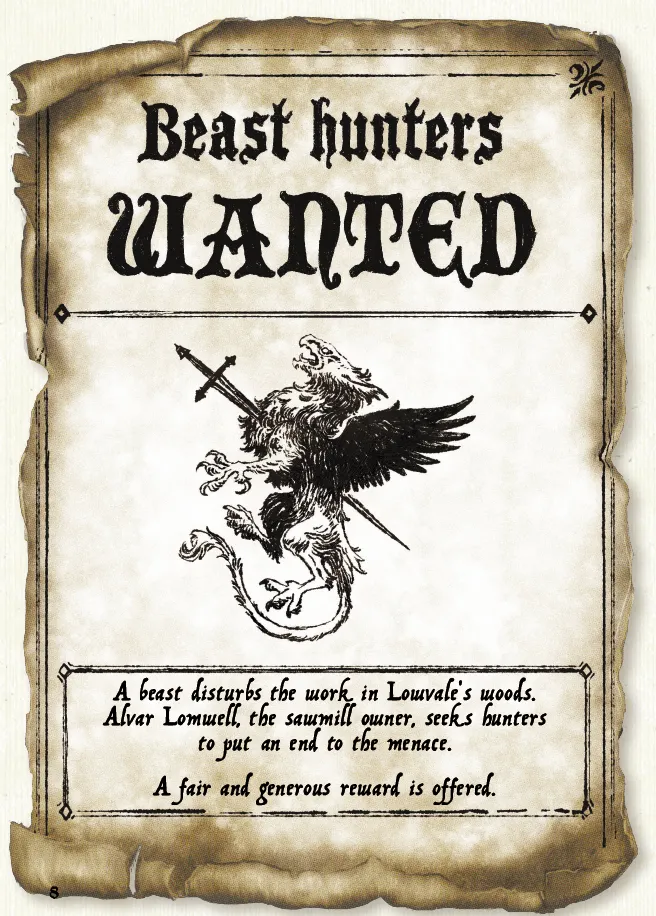
The adventure starts in the eponymous Lowvale, a quaint little village that sits outside an old forest from which a stream emerges and splits the settlement down the middle. It's a town that has its own little rumor mill, class resentments, all of the stuff you want for proper small town vibes, if not exactly at the level of detail that my friend Amanda P. might advocate for. Interestingly enough, this settlement was actually founded by refugees fleeing a dragon attack that destroyed their first settlement a couple of generations ago. Less interestingly, the dragon does not feature in the adventure at all.
This is a classic "small town with big problems" module. A local lumber mill foreman was tricked by a witch into cutting down a tree which sealed an ancient evil. It's like FernGully, but with a much cooler aesthetic. The local mill owner has put out the call for beast hunters to put an end to said ancient evil, which takes the form of a white horse that emerges from the water, charms a victim into riding on its back, then takes them back to its lake to drown them. It's called the Nykur, and at first I thought it was a reskin of the Kelpie from Scottish folklore with a lot more teeth, but it turns out there's a horse from Scandinavian folklore that also tricks you into riding it before it drowns you. A lot of suppressed guilt over ancient horse sacrifices in the Bronze Age, I suppose.
Players are going to have to figure out the nature of this equine threat, how to deal with it, and then venture into the woods to end the monster once and for all. Failure to do so means that a new innocent villager is taken every night. There's always a danger with these types of adventures with there not being enough sense of urgency, and that is very much not the case here.
Overall, I really like the woodsy, folk setting and the use of classical Faerie Tale figures like the witch and the water horse. It's an easy to understand setting and premise while still not feeling like vanilla D&D.
Art and Aesthetics
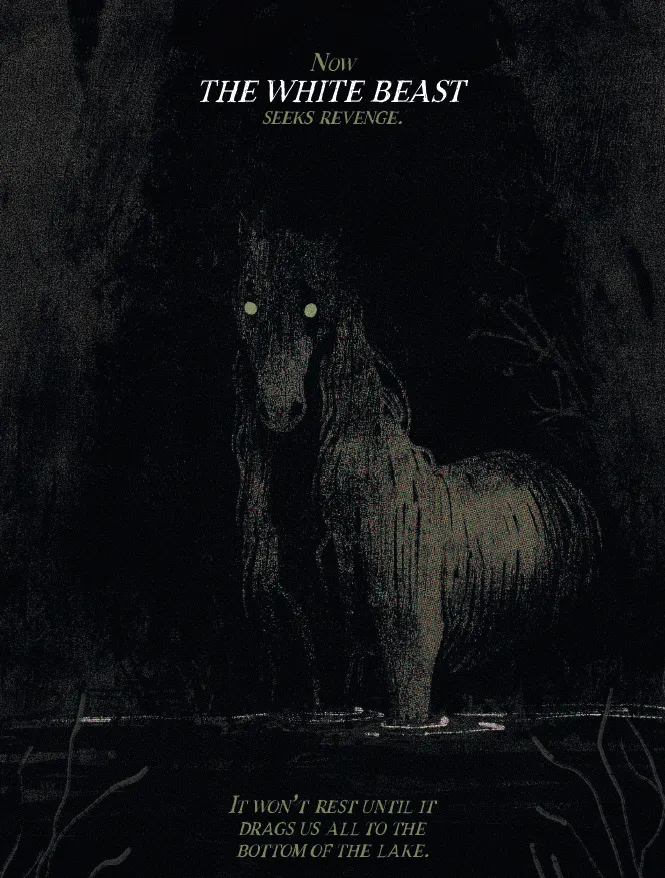
Art by Tania Herrero.
The book construction is very high quality, sewn binding and matte pages that feel durable without being impossible to read because of gloss. The book is also a larger form factor than I am used to, somewhere between A5 and A4 in size, that leaves plenty of room for art without being as bulky as your A4/Letter that are a little bit more difficult to transport and find space for at the table.
The overall graphic design of this book is stupendous. Not just the artwork, but the use of color and texture is just amazing. Most spreads have this low-opacity, wood grain texture with little imperfections built in that lets you know it is there without impacting legibility. The villager artwork is all in earth tones, slightly cartoonish in a good way, and all these things combine to really emphasize the rural, grounded lives of the people of Lowvale.
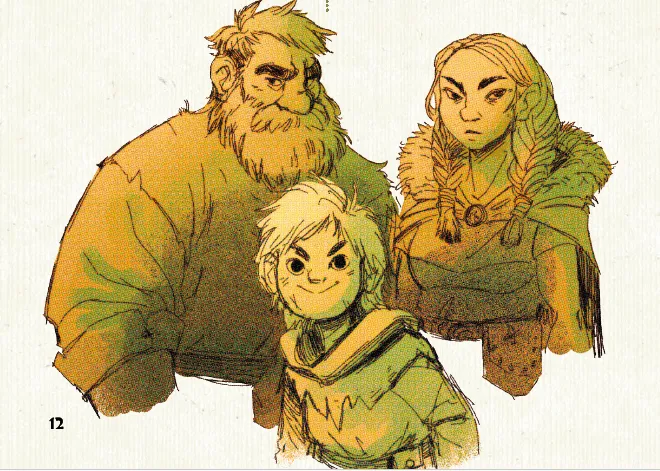
Meanwhile, the monsters of the Woods use a more eerie, otherworldly color palette that reminds me more of Tania's previous work Crown of Salt, but still feels very appropriate here. Lots of greens, blues, and reds contrasting with black backgrounds for visual pop. The two disparate aesthetics of Lowvale and the Woods have just enough similarities to feel cohesive while still providing a great contrast between the more mundane and magical elements of the setting.
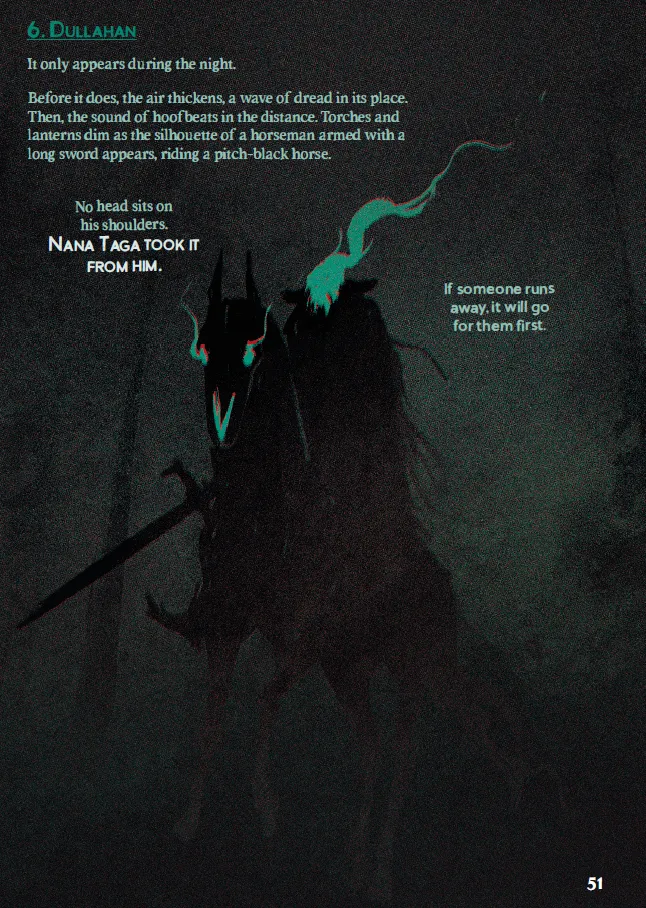
This is my favorite piece exemplifying what I mean. Art by Tania Herrero.
Writing and Scenario Design

Art by Tania Herrero.
Tania is one of those people who I respect and envy in equal measure: a person who can write and do art well. Even more impressive in that English is not her first language. She either has an exceptional grasp of the English language or her credited editor, Jordan Boschman, is a very skilled line and copy editor. I wouldn't describe the language as poetic, but there are some great descriptions in this book that would really help the GM convey the environment to players.
I am less enamored with the overall scenario design. The objective players will have during this module is quite clear: they must find a way to kill the Nykur. For each night they fail to do so, villagers are kidnapped and (mostly) drowned until the town kills the person they think is responsible, who just happens to be the one paying the players. This part is great because it is a clear failure point that is telegraphed every time the players fail to save a victim and the discontent of the village grows.
Issue #1: Key-based Scenario design.
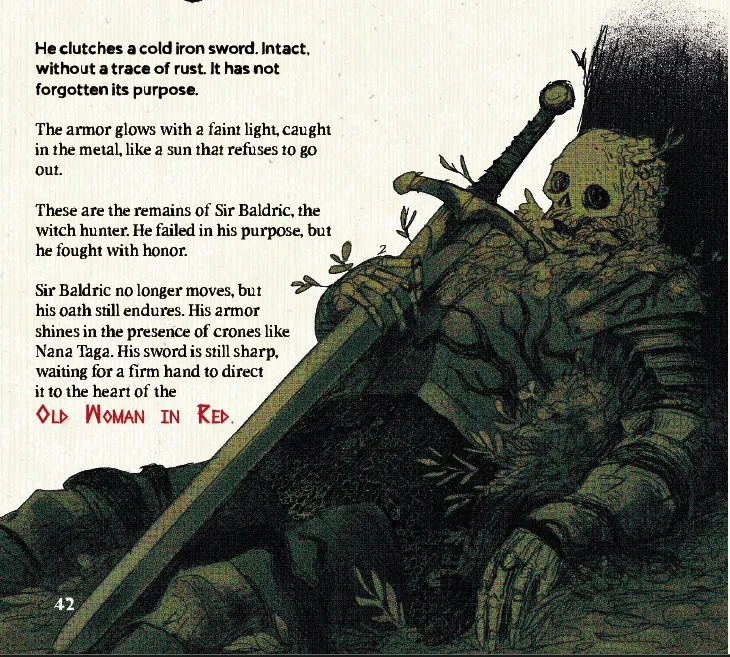
You better hope your GM rolls a 3. Art by Tania Herrero.
The issue is that this module requires you to have two Keys to defeat the Nykur: a rune with its true name inscribed on it and a cold iron weapon. If you don't have both of those things, you really can't beat this thing. The rune you need to keep it from using its powers against you, and the sword you need to kill it for good.
The rune is actually interesting to obtain, given that you can bargain with either Nana Taga (evil witch) or Robin Goodfellow to obtain it. One neat interaction with this is that if you drag your feet and let two twins from the village get kidnapped, Robin will refuse to help you unless you go save them from the previously mentioned Nana Taga.
The problem is that Nana Taga isn't fleshed out enough to make for an interesting antagonist. She supposedly is willing to bargain as long as she can twist it to her favor, but she has no defined desires beyond the two twins. If she already has them, I as a GM have nothing to go on as far as what she might want in exchange for either the twins or the Nykur's rune. You can actually trap her within her domain by carving her name into a tree, but you can't kill her without a cold iron weapon.
Which brings us to the problem of the cold iron sword. It is the main Key to the scenario in this module, because both principal antagonists cannot be truly killed without it. The problem is that the sword in question is in a random hex out in the forest and there's not a single clue that points towards where you might find it. Unless you blindly stumble upon it, you can't really deal with the major threats of this module. I keep calling it a Key because I think of this as akin to putting a pivotal part of your dungeon behind a magically locked door.
There are a few ways to solve this, of course. Let players seal the Nykur like they can seal Nana Taga, which was how Nykur was originally dealt with but bizarrely is not included as a written option within the module. You could also have Thalor Shadowgreen, former witch hunter's assistant, either provide a rough understanding of where his master fell or have manufactured cruder cold iron weapons that he might give PCs if they agree to rescue his daughters or swear to deal with the Nykur.
I shouldn't be the one having to provide these solutions, though. That is the job of the module.
Issue #2: Misuse of Hexes
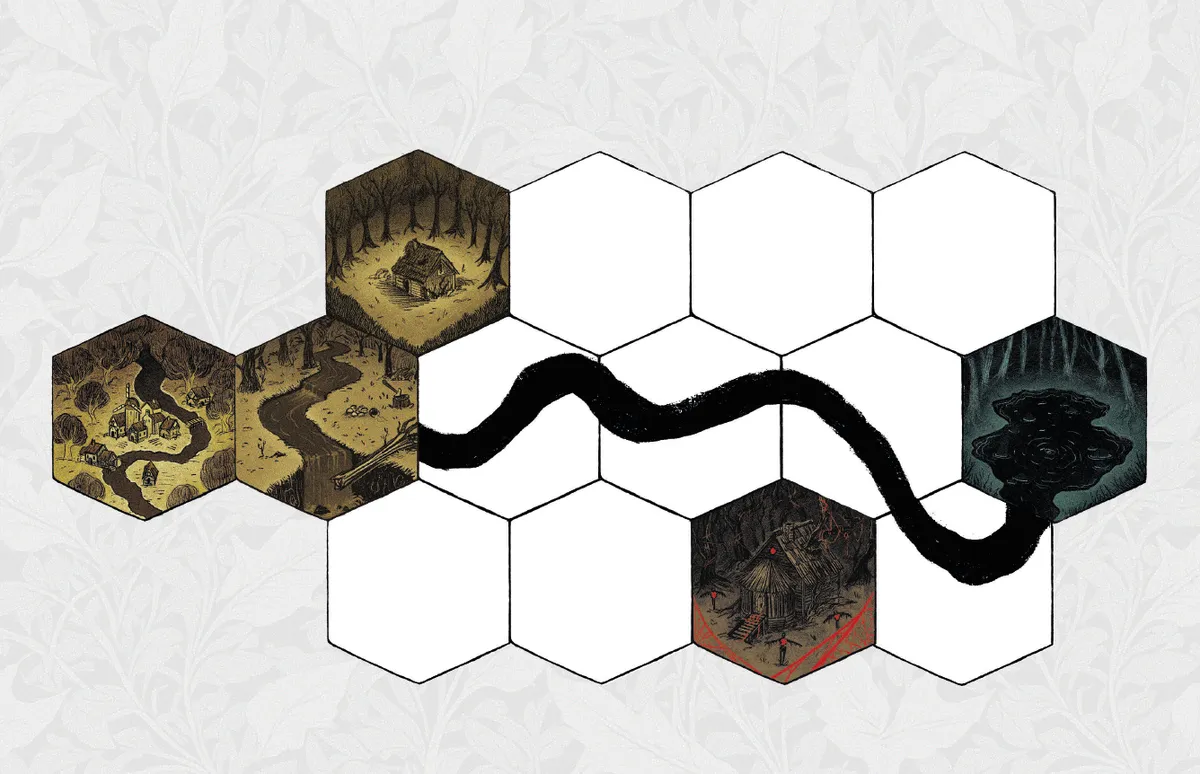
Art by Tania Herrero.
This is the map of the Woods. It is a hexmap, though I will note that movement is constrained enough that I don't think it much benefits from being one. The elephant in the room with this map is that so much of it is blank. That is because each of those blank hexes is one of 6 random areas that you can either roll for beforehand or at the table as players traverse the Woods. I have issues with this, my most obvious objection being that there are 9 blank spaces on that map, not 6. Honestly though, my larger objection is the fact that hexes are meant to be containers for locations and how and when we experience those locations matters.
You could, of course, make the argument that this is a depthcrawl sort of scenario, where space is more mercurial and subject to the whims of fey magic and logic, but that falls apart when you consider that the three locations where Fae are actually present are fixed on the map. If their location matters on the map, then they should all matter, and I think abdicating that responsibility as a designer not only makes more work for the GM, but ultimately prevents the level of interconnected location design that this module would really benefit from.
Layout and Usability
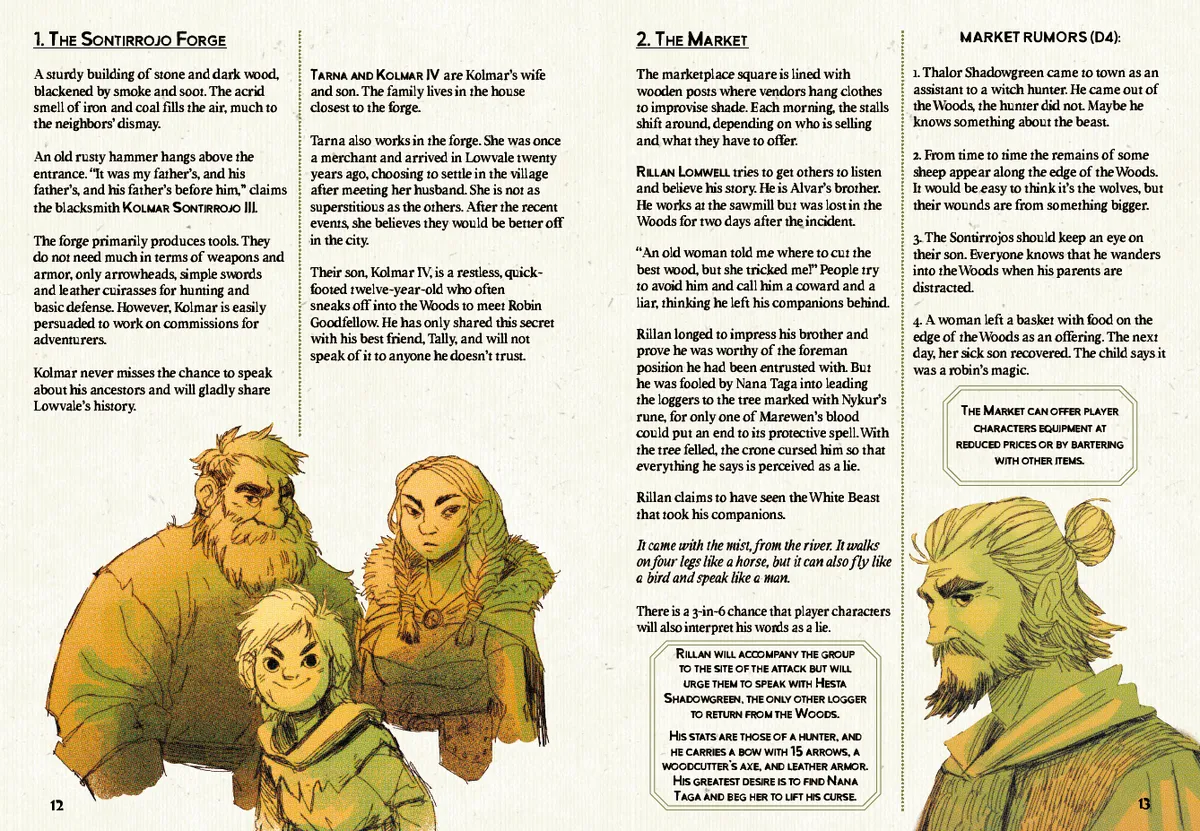
Art by Tania Herrero.
I mentioned before that Tania's graphic design is top-notch, and that absolutely includes the layout. Tania falls clearly into the Prose category in the Prose versus Bullet Point debate, but I don't hold that against her because she uses generous spacing and smart formatting to draw attention to key elements of her text. Tania comes from the Mork Borg space, where module designers have a reputation for sometimes prioritizing aesthetics over legibility, but I almost always had a clear understanding of the hierarchy of a page at only a cursory glance.
At times, though, I long for more explanation within the keys. The level of art on the page is sometimes glorious in its decadence, and at times it is a welcome sight, but in other situations I find that I would have rather had another paragraph that would provide me with a more thorough understanding of an encounter or location.
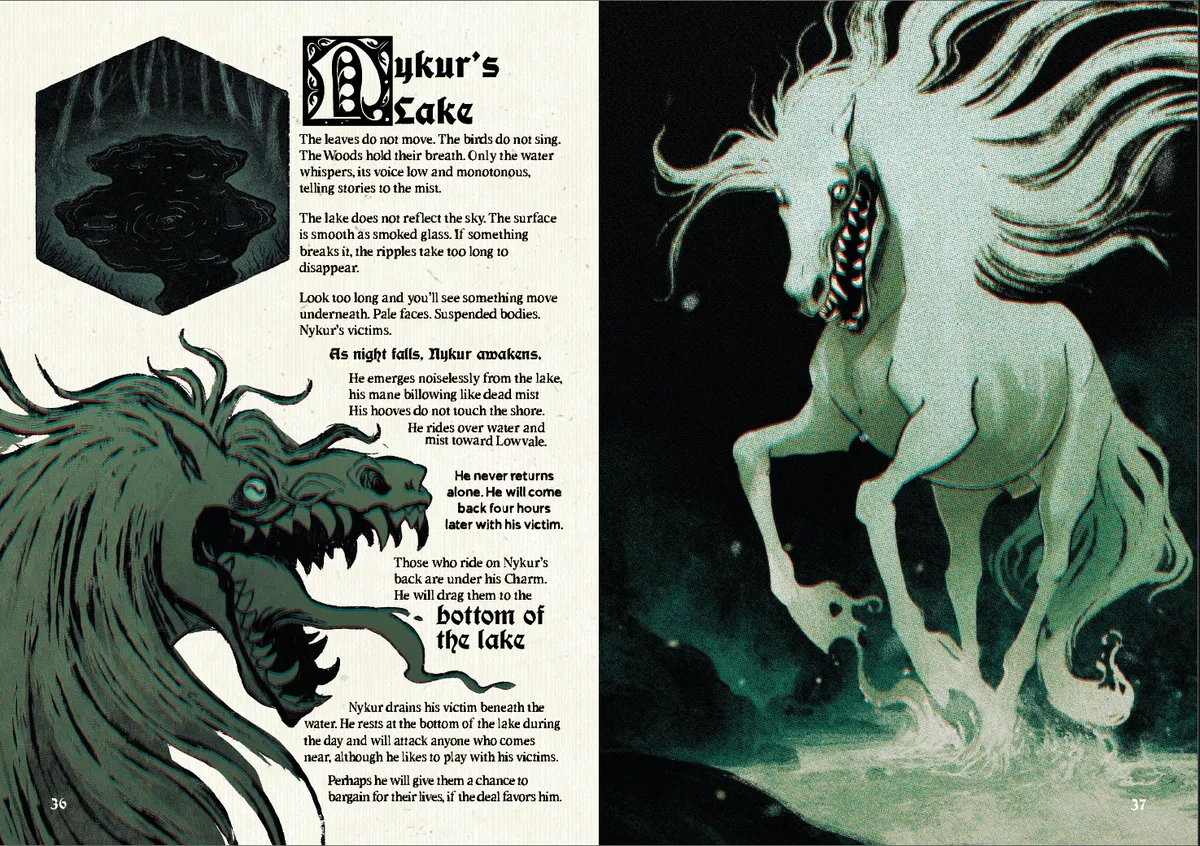
I love this spread, but did we really need two drawings of the Nykur being terrifying when we don't have a clear understanding of what sort of bargains the Nykur might accept? What does he want, besides the deaths of the people of Lowvale? Art, obviously at this point, by Tania Herrero.
There's also two attempts at narrative being used in this book: one I really would like to see more of, and one I don't generally think is a good idea.
The first is that there is an NPC in this book that can tell you the story of the founding of Lowvale and the sealing of the Nykur. Tania provides spreads that illustrate this exposition, to where you could actually turn your book towards the players and read it like a picture book. I am a trained librarian. Part of my job used to be reading picture books to people, and I am all for the use of this structure to encourage players to actually pay attention to short bits of exposition from an NPC. It's just a cool technique that I can't recall having ever seen attempted before.
The second use of narrative is in how the book is structured to conceal vital information from the GM, which has the effect of the GM experiencing surprise as they work their way through the spreads. I fundamentally disagree with this approach to module design because it increases the GM's need to reread the text in order to gain an understanding of the scenario as a whole.
A single spread explaining the nature of the incident that freed the Nykur, a brief history of Lowvale, and the principal NPCs of the module would have greatly reduced the burden on the GM. Even structuring the village key differently, to where the Lomwell Sawmill was 1 instead of 7, would have introduced a more complete version of the inciting incident and helped the GM play the world more effectively with no additional spreads necessary. Even nice graphic design touches, like a flower icon at every village location where someone lost a loved one to the Nykur in the inciting incident, is hampered by the fact that the module doesn't directly explain their significance to the GM.
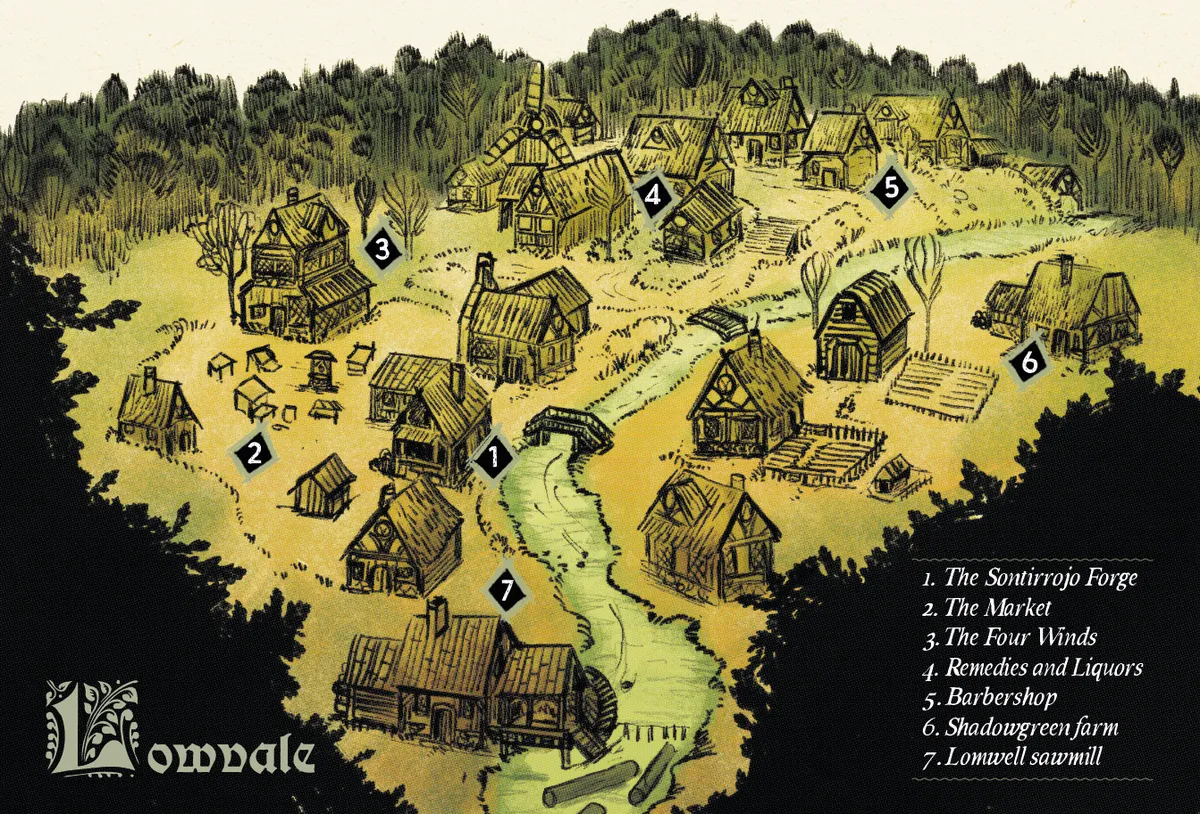
Just moving some of these numbers around along with some spreads would do wonders. Art by Tania Herrero.
Conclusion
In general, I think this module approaches "System Neutral" with the belief that GMs will have to read this module and then play "connect the dots" as they flesh it out based on the specifics of their system of choice. This is, frustratingly, not how I would like to use it. I am used to converting things into Cairn based on their fiction, and so I wish this module had its contents nailed down enough that I could simply open it and start running.
I don't want to have to make a table to roll on for which villager disappears in the night, I want that to already be in the spread. I don't want to roll to see if the Red Cap's arrows are poisoned, I want them to be poisoned and for you to tell me qualities of said poison so I can improvise their effects during play. I don't want to rescue the gnome from the trolls, be told there the gnome will lead players to a magical relic, and then not be told what that relic is. Give me the Fiction and I can provide the mechanics. Don't make me do both.
Still, despite all that I love the vibes of this module. It's got great art and layout, an excellent premise, and with a little bit of work I know it would be a great night or two of gaming for me and my table. It does a lot of things right, even if some of its choices I ultimately don't agree with.
I will absolutely be buying Tania's next module if it is anything remotely like this, and I think anyone who likes good art and creepy Woods as a setting would be a fool to pass this up. Just don't expect to run this sight unseen. It will benefit from some percolation.
You can find digital copies of The White Horse of Lowvale here.
For physical+digital combos, you can purchase directly from the designer's website here.